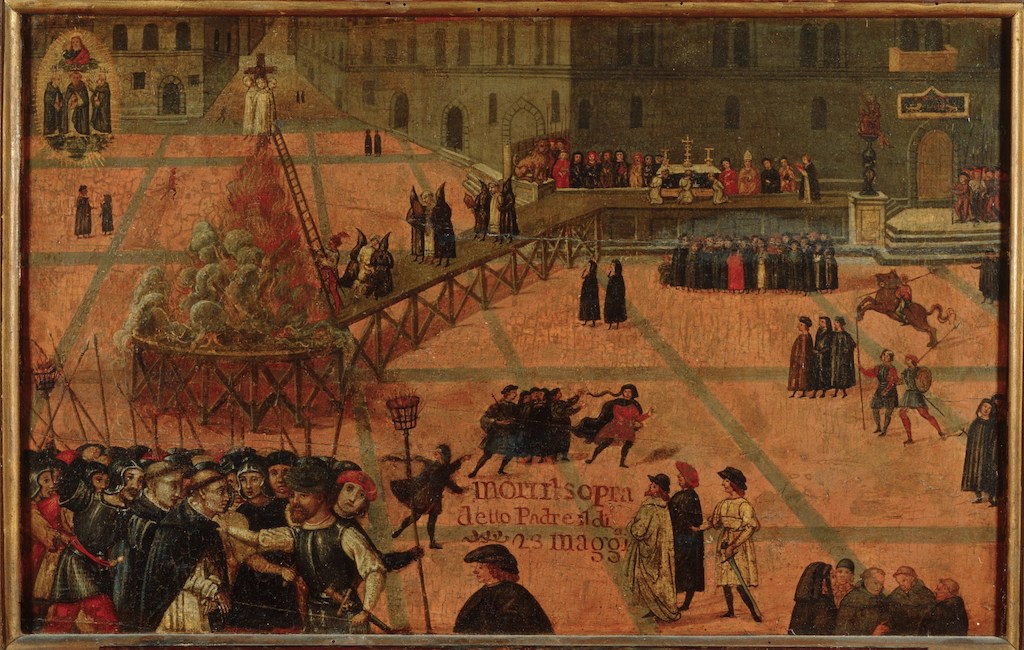
‘Piagnoni’, they were sometimes called: the ‘weepers’. They were gangs of teenage boys and young men – mostly middle class – who patrolled the streets of Florence in the 1490s, hurling abuse at the impious – drunks, gamblers, women – and hurling stones too. They were called ‘pinzocheroni’, too: bigots.
They, like the city, were under the sway of Girolamo Savonarola, a Dominican friar who believed he was the voice of God. His enemies called him ‘Friar Big Onion’, or ‘the little unhooded one’, but he was a man to be reckoned with. For a while, Savonarola had the whole of Renaissance Florence in his grasp.
Carnival was a time of wantonness and riot; under Savonarola it became an orderly ritual of destruction, culminating on 7 February 1497 with what’s remembered as the Bonfire of the Vanities.
The piagnoni went door to door to prise out sinful things from their owners. One witness listed what they took: “lascivious pictures, vanities, such as women’s hats, mirrors, wigs, dolls, perfumes, pictures in intarsia, sculptures, cupids, playing cards, dice boards, chess pieces, lutes and other musical instruments, books of diverse poets”.
These were all brought to the Piazza della Signoria, where a tiered wooden edifice had been built, somewhat like a pyramid, filled with brushwood and broom. At the structure’s apex stood a statue of Satan; demons circled its base.
The vanities were heaped on the edifice and, after trumpets had sounded, torches lit the fire. “With the greatest of happiness they burned everything,” an eyewitness said, “and almost all of the citizens were present, and the windows all around were filled with women.” It was, in its own way, a carnival too.
Although he did not know it, the end was near for Savonarola. On 13 May 1497, he was excommunicated; a year after that, on 23 May 1498, he and two fellow friars of San Marco were hanged in the Piazza della Signoria. Their bodies were then burned on a platform sprinkled with gunpowder so the fire crackled and spat like fireworks, an eyewitness wrote. Even the gallows were burned. At last the ashes were thrown in the Arno; there were to be no relics of this most powerful of martyrs.
This is an extended version of a piece that first appeared in the February 2024 issue of History Today.
Like this? You can read more of Mathew’s History Today Months Past pieces here.
Leave a comment